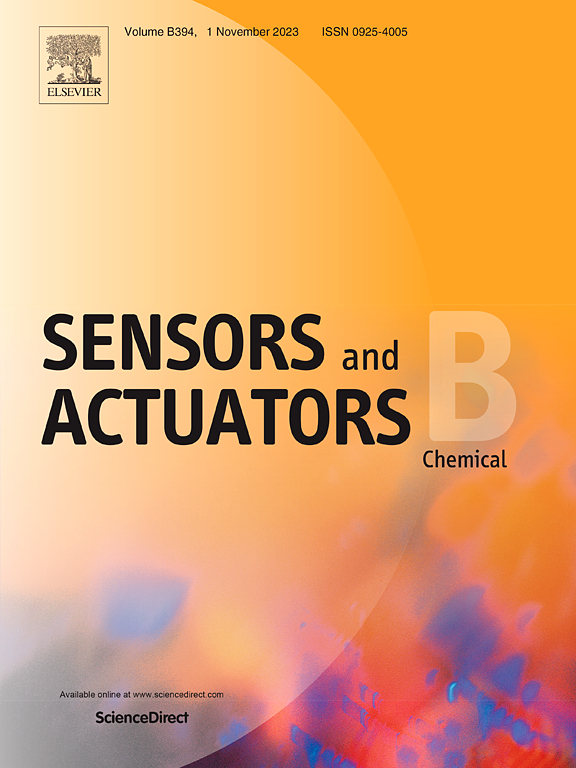溴甲酚绿双比色电化学平台选择性检测阿托品
IF 8
1区 化学
Q1 CHEMISTRY, ANALYTICAL
引用次数: 0
摘要
由于阿托品在中毒案件中的作用,它在法医调查中至关重要,需要精确的检测方法。我们提出了一种新的双模式分析平台,将丝网印刷石墨电极与方波伏安法和溴甲酚绿比色反应相结合。这种双重平台提供了三种不同的分析响应:通过比色反应和比色反应前后的电化学反应的颜色变化,允许稳健的阿托品鉴定。首次研究了阿托品在溴甲酚绿存在下的电化学行为,并通过核磁共振分析阐明了机理。虽然阿托品单独经历不可逆氧化过程,但比色反应促进了涉及溴甲酚绿的氧化还原过程,从而允许间接检测阿托品。通过检测饮料和生物样品中的阿托品,以进行潜在的spike和中毒诊断,证明了这种双传感平台在现实世界中的适用性。重要的是,该平台已被证明在含有奎宁的溶液中起作用,证明其适用于分析低阿托品浓度的强苦味汤力水,克服了这一已知的分析问题。该方法线性范围宽(0.001 ~ 0.4 mg mL−1),检出限低(0.255 μ mL−1),稳定性好,相对标准偏差小于7%。干扰实验证实了该方法的选择性,从饮料和生物样品中提取的阿托品回收率接近100%。该平台是一种简单、快速、有选择性的筛选工具,在阿托品检测的法医应用中显示出巨大的潜力。本文章由计算机程序翻译,如有差异,请以英文原文为准。

A dual colorimetric-electrochemical platform based on bromocresol green for the selective detection of atropine
Atropine is crucial in forensic investigations due to its role in poisoning cases, requiring precise detection methods. We propose a novel dual-mode analytical platform that combines screen-printed graphite electrodes with square-wave voltammetry and a colorimetric reaction using bromocresol green. This dual platform provides three distinct analytical responses: a colour change via the colorimetric reaction and electrochemical responses before and after the colorimetric reaction, allowing robust atropine identification. For the first time, the electrochemical behaviour of atropine in the presence of bromocresol green has been investigated, with mechanistic insights elucidated through NMR analysis. Although atropine alone undergoes an irreversible oxidation process, the colorimetric reaction facilitates a redox process involving bromocresol green, allowing indirect atropine detection. The real-world applicability of this dual-sensing platform is demonstrated by detecting atropine in drink and biological samples for potential spiking and poisoning diagnosis. Importantly, the platform is shown to function within solutions containing quinine, proving its suitability to analysing strong and bitter tonic water drink with low atropine concentrations, overcoming this known analytical problem. The developed method exhibited a wide linear range (0.001–0.4 mg mL−1), a low limit of detection (0.255 μg mL−1), and excellent stability with relative standard deviation lower than 7 %. Interference studies confirm the method’s selectivity, and atropine recoveries from drink and biological samples were close to 100 %. The proposed platform is a simple, rapid, and selective screening tool, and shows significant potential for forensic applications in atropine detection.
求助全文
通过发布文献求助,成功后即可免费获取论文全文。
去求助
来源期刊

Sensors and Actuators B: Chemical
工程技术-电化学
CiteScore
14.60
自引率
11.90%
发文量
1776
审稿时长
3.2 months
期刊介绍:
Sensors & Actuators, B: Chemical is an international journal focused on the research and development of chemical transducers. It covers chemical sensors and biosensors, chemical actuators, and analytical microsystems. The journal is interdisciplinary, aiming to publish original works showcasing substantial advancements beyond the current state of the art in these fields, with practical applicability to solving meaningful analytical problems. Review articles are accepted by invitation from an Editor of the journal.
 求助内容:
求助内容: 应助结果提醒方式:
应助结果提醒方式:


